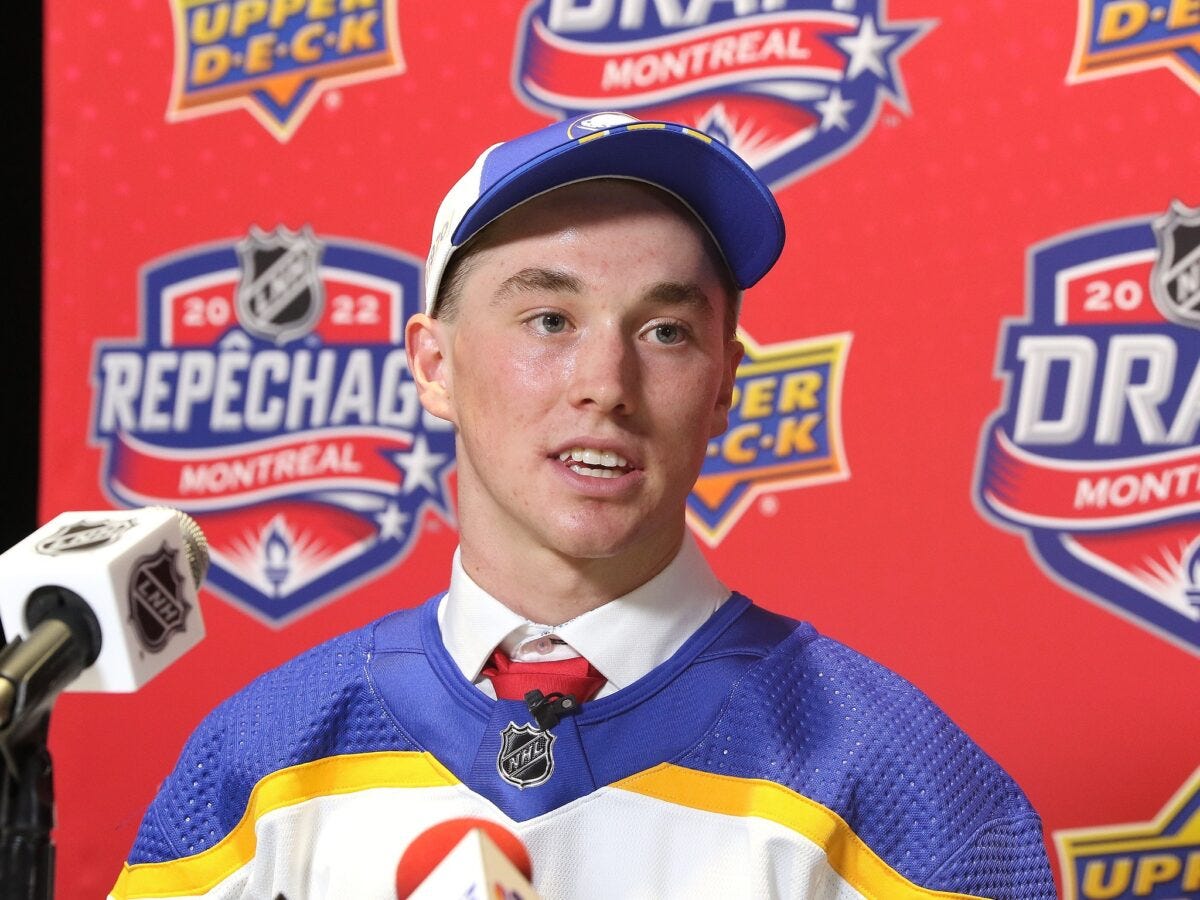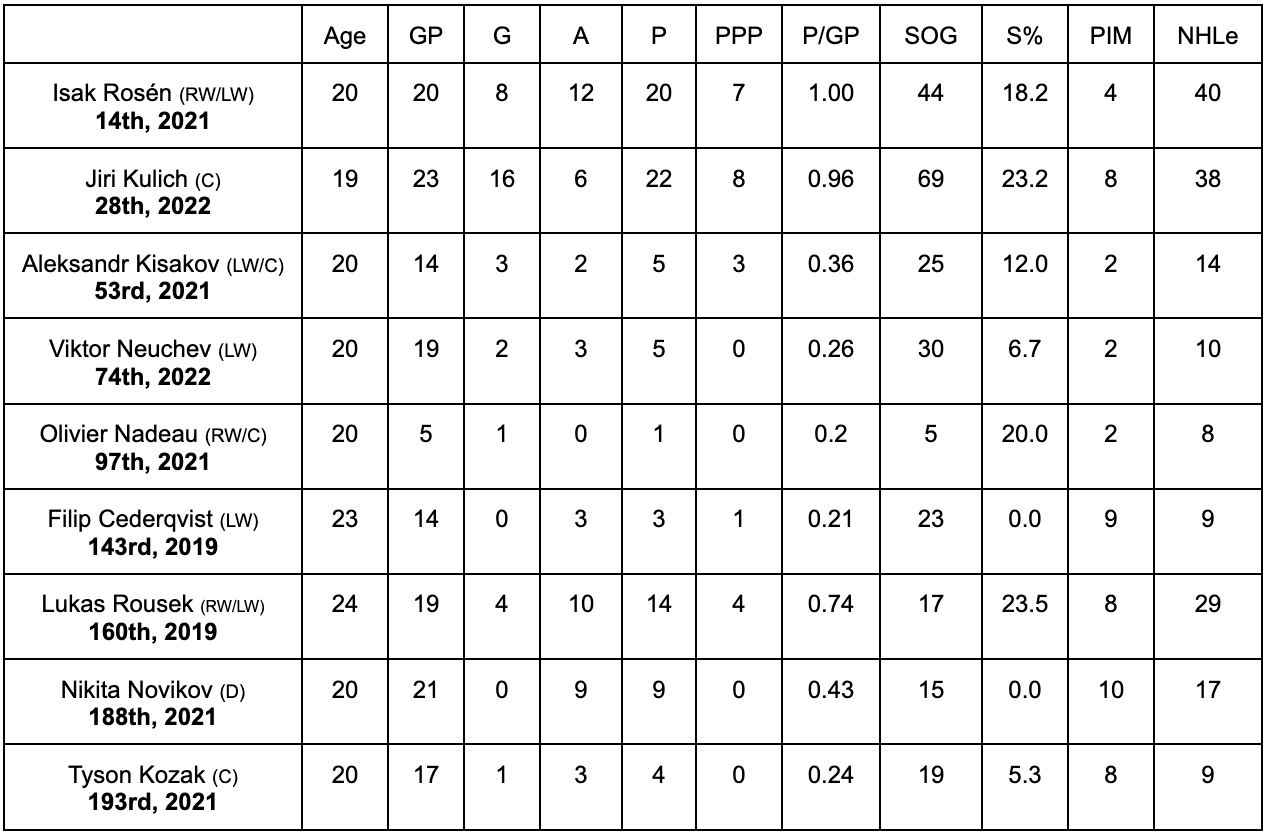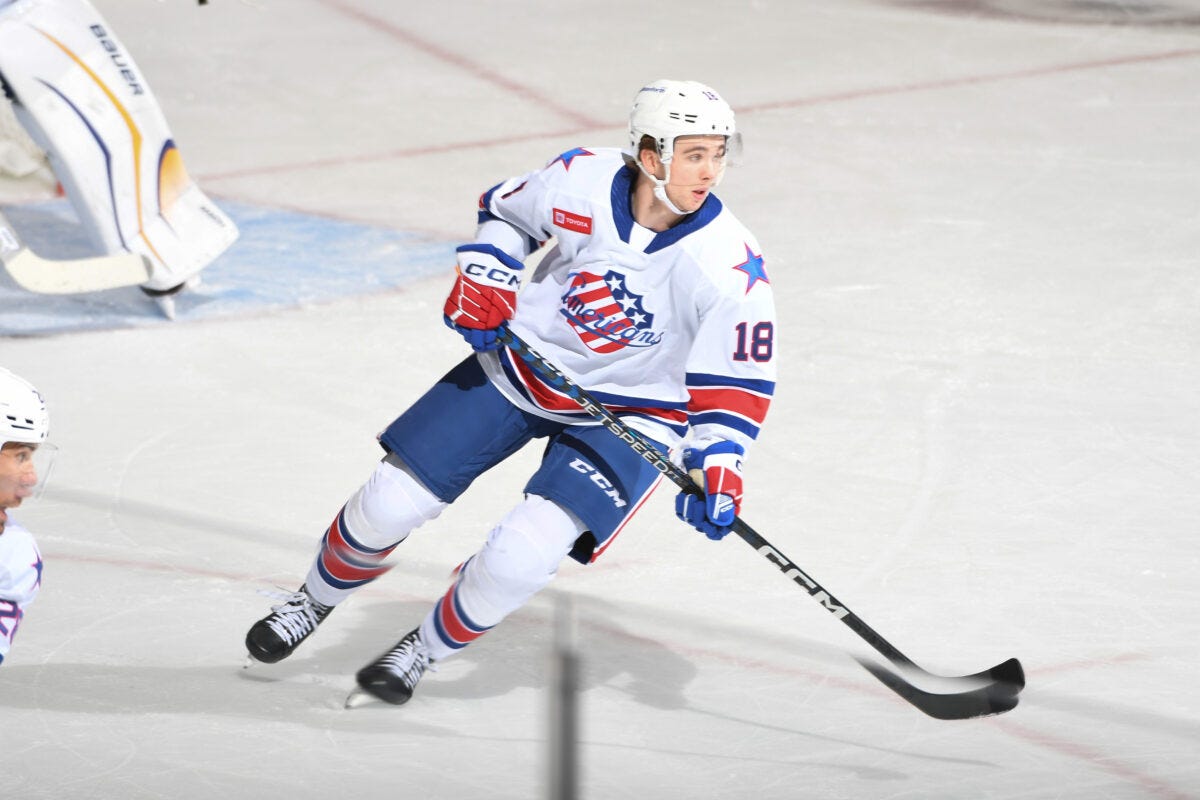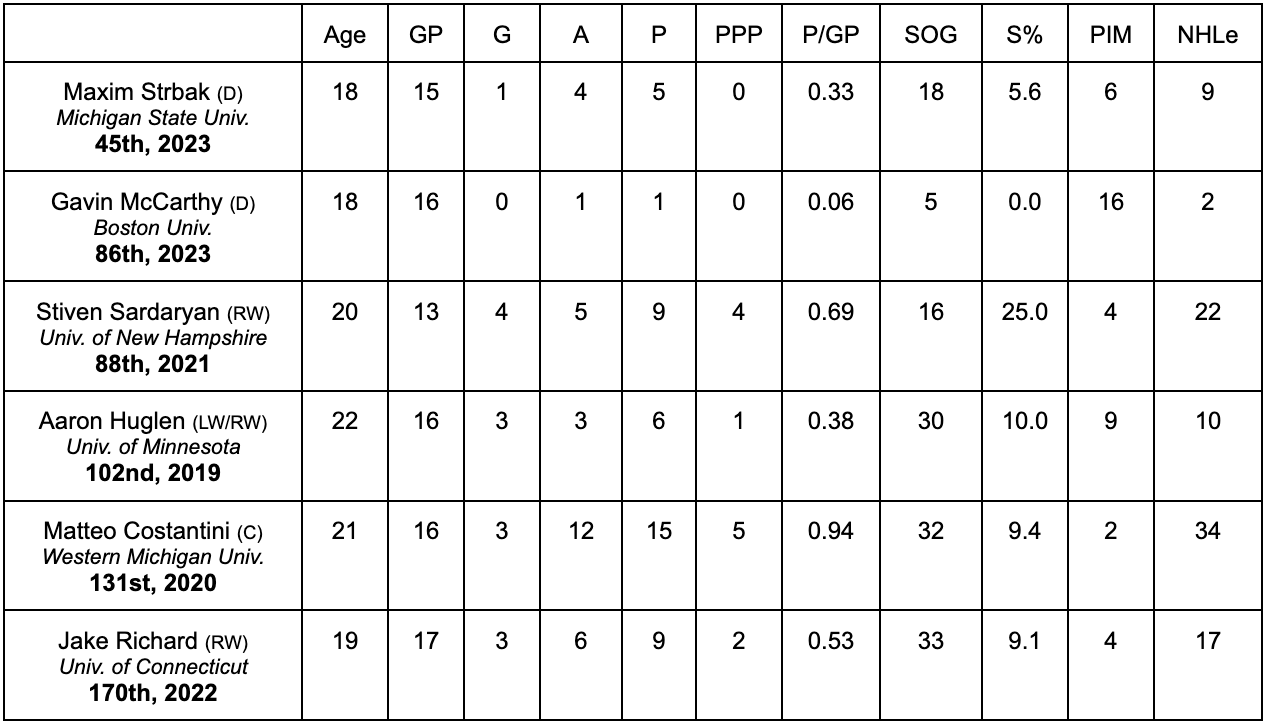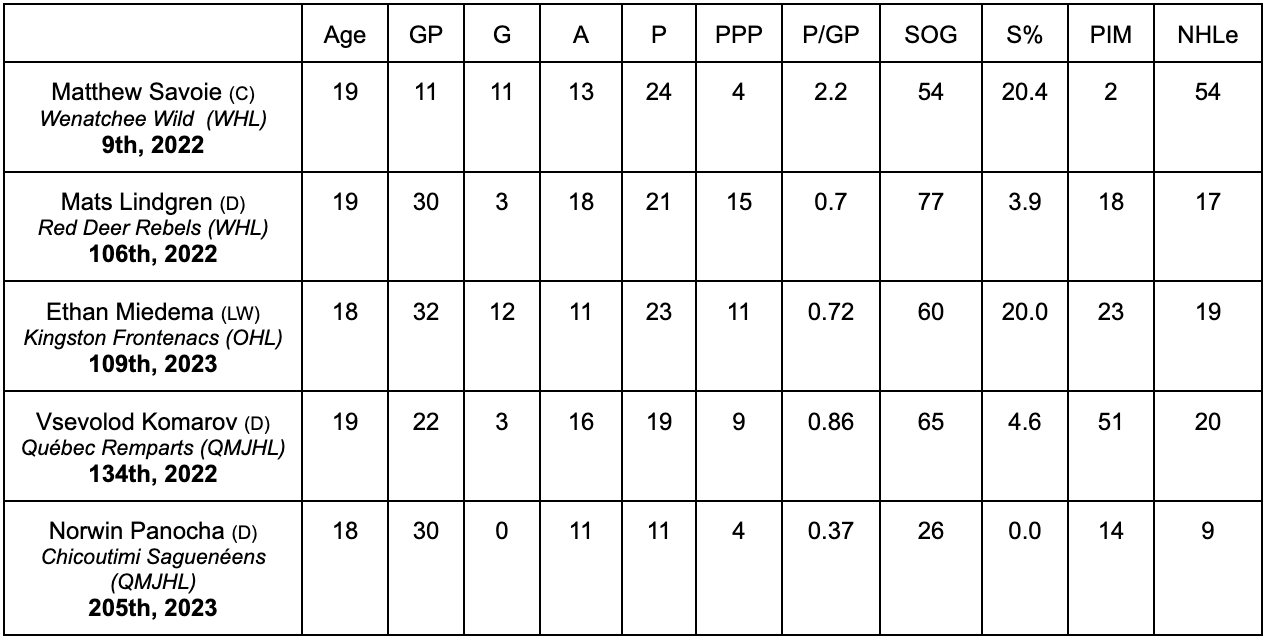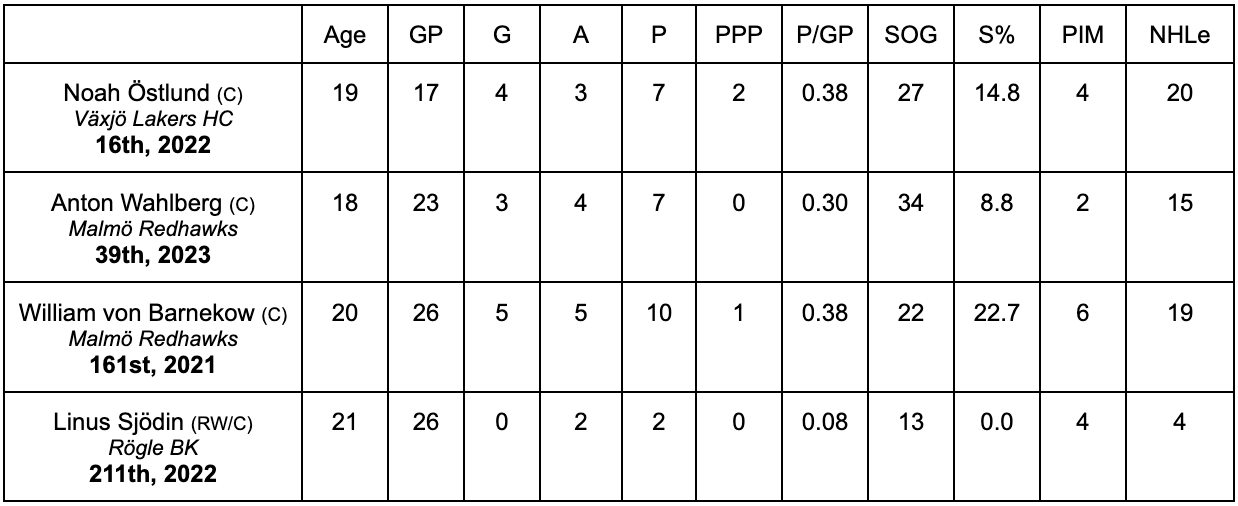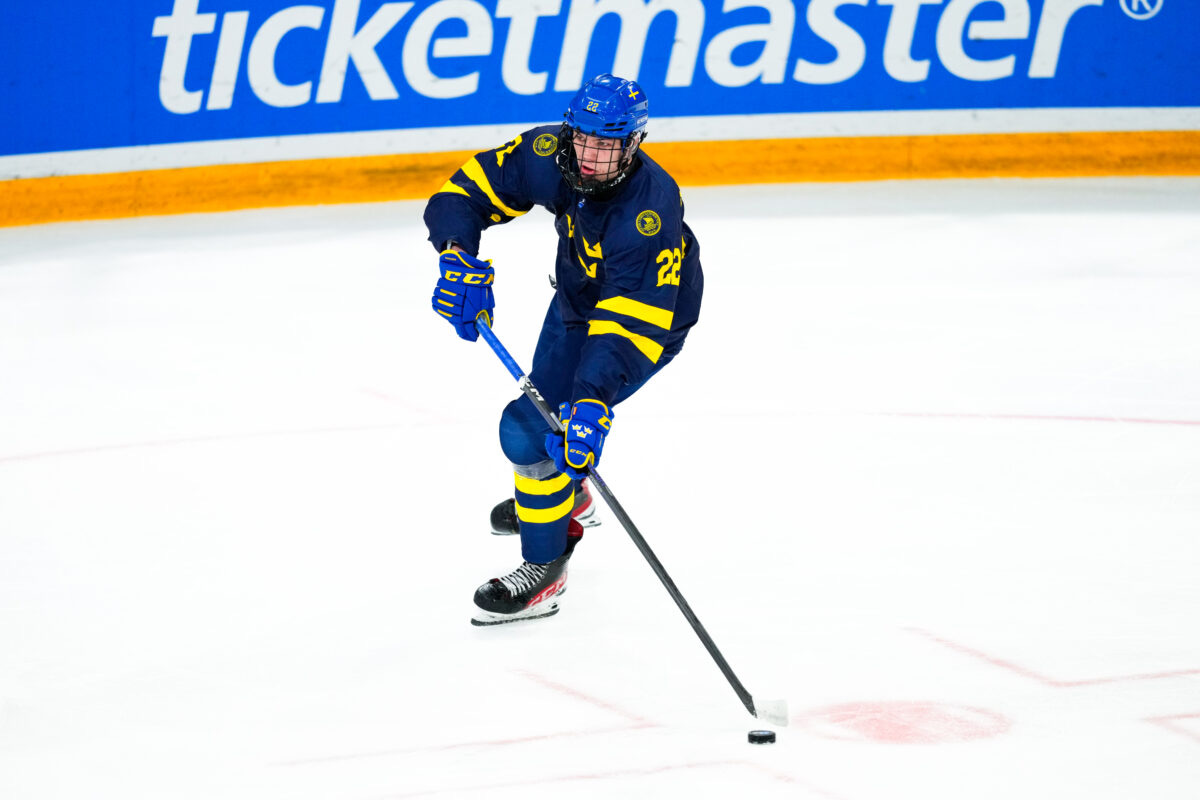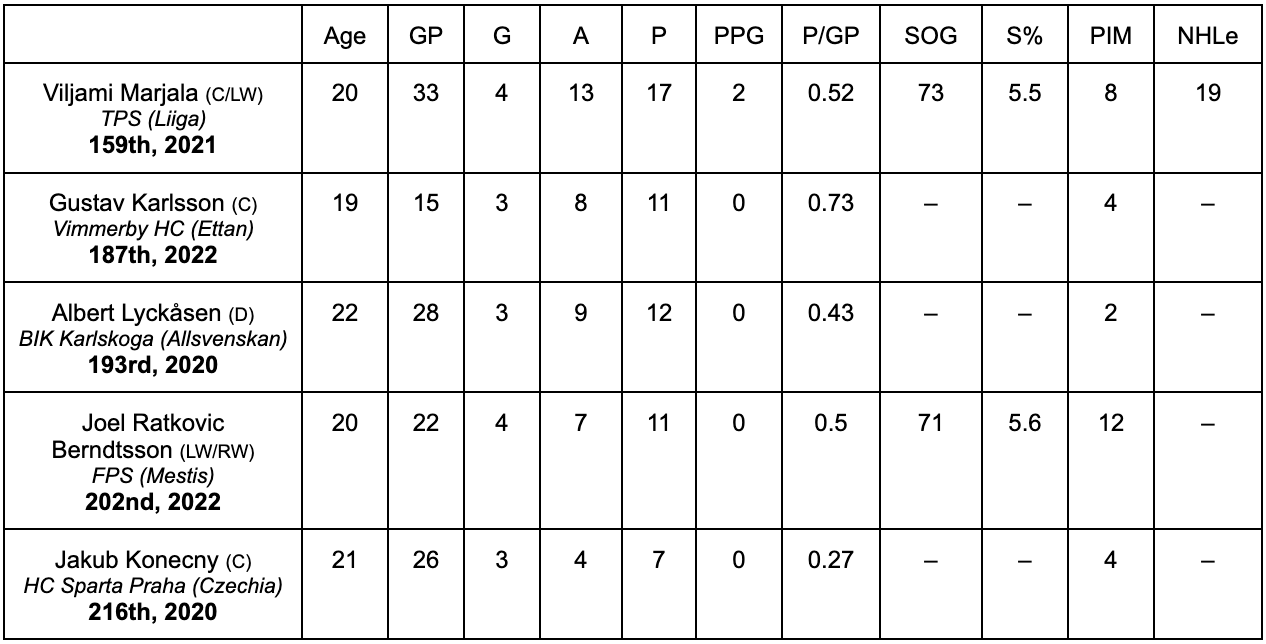Sabres' Prospect Update: Dec. 24
Matthew Savoie's continued WHL dominance headlines Sabres' prospect group. Plus, Rochester Americans Jiri Kulich and Isak Rosén continue developing with flying colors.
Welcome to the first Buffalo Sabres prospect update of the revamped THW Substack! Today’s prospect update — the first of many — will be free for all THW Substack subscribers, but shortly, premium posts like this one will only be available to paid subscribers of THW Substack. Get access to all of The Hockey Writers’ premium content, including exclusive subscriber-only reports, analysis, long-form commentary, gameday previews, and prospect updates just like this one… all with one subscription.
The Sabres have one of the league’s best prospect systems, commonly ranked as a top-three farm system around the NHL, so monitoring their progress is a key facet of Sabres fandom.
Before jumping into the prospects’ performances, making a few mental notes about the charts you’re about to see is important. Firstly, some of the leagues categorize and track data differently. For example, while most of the leagues have readily available statistics for both power-play goals and power-play assists, some leagues only record power-play goals on their public statistics pages. Some leagues don’t even have public data for metrics as basic as shots on goal.
It’s also important to define NHLe — or NHL equivalency. NHLe is a tool to project a player’s NHL viability through point totals using a mathematical model. Points aren’t everything, but in terms of prospects, they’re the best metric to project success at the NHL level. Each league has a different equivalency — one point in the AHL is certainly not the same as a point in the Canadien Juniors. On that same token, don’t be surprised to see players with similar point productions in different leagues have vastly different NHLe values.
Next, there’s the matter of how the data is organized. For each league — or conglomeration of leagues — I organized the data into tables with distinct headings: Age, games played (GP), goals (G), assists (A), points (P), power-play points (PPP), points per game (P/GP), shots (SOG), shooting percentage (S%), penalty minutes (PIM), and NHLe. As I previously mentioned, some leagues have power-play goals (PPG) in place of PPP, so keep an eye out for those. Goaltenders are organized into similar tables, with Age, GP, goals-against average (GAA), save percentage (SV%), and their records as the categories. The players in their respective leagues are organized by draft order, from highest drafted to lowest. Aside from the tables, I’ll be posting some notes highlighting notable players and/or notable performances.
Finally, there’s what I consider to be the “prospect” threshold. I considered every single player in the Sabres’ pipeline under the age of 25, which dates back to the 2019 NHL Draft, a prospect. Chances are, if a player is older than that, they’re probably never making the NHL full-time, so I excluded them from the list.
Without further ado, let’s jump right in:
Rochester Americans (AHL)
Since their scorching-hot start to the AHL season, things have tempered out for Isak Rosén, and Jiri Kulich. At the end of October, Rosén and Kulich each had nine points in the team’s first seven games, with Rosén having gained 11 points in 13 subsequent games and Kulich having gained 13 in 16. That’s not to say that these are bad numbers — NHLes of 40 and 38 are nothing to scoff at for 20 and 19-year-olds.
Aleksandr Kisakov has also fallen off a cliff production-wise. He began his 2023-24 campaign with five points in as many games but has not since put a point on the board. It’s somewhat worrisome, but he still looks good out there.
Lukas Rousek is the last name on the list that’s fallen off a bit. In his first seven games, he had six points, but has since put up eight points in 12 games. It’s respectable, and he was offered a short stint in the NHL because of his prowess in Rochester in the early goings of the season, but it’s clear he needs more time to marinate before making the jump.
I’d like to point out that Ryan Johnson is no longer on this list because I now consider him to be a full-time NHLer. He’s earned it — congrats, Ryan!
NCAA
Where Stiven Sardaryan and Jake Richard’s productions have flattened out a bit, Matteo Costantini has looked phenomenal and only continues to get better game by game. His recent surge in production was headlined by a three-point outing against Denver on December 8th.
Canadian Hockey League (OHL, QMJHL, WHL)
Matthew Savoie is the obvious standout here. He’s skating circles around the WHL as an over-talented 19-year-old. Despite playing in just 11 of the team’s 35 games, Savoie sits at sixth on the team in points, obviously leading the team in points per game. Even more astounding is that he’s done that with just four power play points. He’s going to be a monster.
Mats Lindgren, Ethan Miedema, and Vsevolod Komarov have kept up the paces they set for themselves at the beginning of the CHL year — at the end of October, their NHLes were 25, 18, and 21, respectively. They’ve sat at about the same rate all year round.
Scott Ratzlaff has continued to improve his play game after game in the WHL. His GAA and SV% might appear to be high, but those are more than respectable numbers for the Canadian Hockey League.
SHL
After missing a month of play with injury, Östlund came back and scored in his first game of SHL action. He was named an alternate captain for Sweden’s World Junior Championship tournament, and was named Sweden’s player of the game in the first pre-tournament match between them and Team USA.
Anton Wahlberg and William von Barnekow have, expectedly, slowed down from their blistering starts, combining for two goals and four total points across 21 games. They’re still among the top U23 scorers for the SHL, but they’ve slowed down significantly.
KHL
Playing in a bottom-six role, Prokhor Poltapov’s KHL NHLe of 15 is genuinely respectable. He’s been a pleasant surprise this year for CSKA Moskva, using his phenomenal speed and skating ability to create space for himself and teammates. He’s got legitimate middle-six potential.
Other European Leagues
Viljami Marjala, the only player here with legitimate NHL potential, has produced admirably in Liiga while playing middle-six minutes in a men’s league. His shooting needs some work, as indicated by his 5.5% shooting percentage. If he can work on that, he’s got potential.
Topias Leinonen has still only played one SM-Sarja game, in which he performed well. It still leaves a sour taste in my mouth that they selected the goaltender before Lane Hudson, though. The Sabres could really use a solid defensive prospect.
That does it for this iteration of the Sabres’ prospect update. Looking through the charts, Matthew Savoie and the AHL frontmen are the clear standouts of the group — the Sabres’ forward corps is going to be very, very good for a very, very long time.
I’d like to wish every one of you a Merry Christmas. Enjoy the holidays and let’s go Buffalo!



